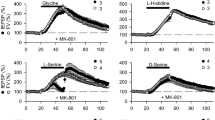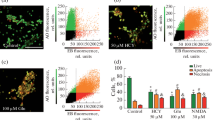Summary.
The release of the inhibitory neuromodulator taurine in the hippocampus is markedly enhanced under various neural cell-damaging conditions, including ischemia and exposure to free radicals. The properties and regulation of the release evoked by a medium containing free radicals was investigated in hippocampal slices from adult (3-month-old) and developing (7-day-old) mice, using a superfusion system. The ‘free radical damage’ was induced by applying 0.01% H2O2. The release of [3H]taurine was in both adult and developing hippocampus partly Ca2+-independent, mediated by Na+-dependent transporters and probably resulting from disruption of cell membranes and subsequent ion imbalance. The release in developing mice appeared to be more susceptible to regulation than that in adults, the stimulation by free radicals being in the latter already maximal. The release was reduced by adenosine A1 receptor agonist R(−)N6-(2-phenylisopropyl)adenosine, which effect was, however, abolished by the antagonist 8-cyclopentyl-1,3-dipropylxanthine only in the immature hippocampus, indicating a receptor-mediated process. Moreover, the evoked taurine release in developing mice was potentiated by the ionotropic glutamate receptor agonists N-methyl-D-aspartate, kainate and 2-amino-3-hydroxy-5-methyl-4-isoxazolepropionate in a receptor-mediated manner, since the effects were abolished by their respective antagonists. The metabotropic glutamate receptors are of only minor significance in the release, the agonists of group I and II receptors slightly reducing the release. Furthermore, NO may also be involved in this release, the NO-generating compounds hydroxylamine and S-nitroso-N-acetylpenicillamine being able to enhance the free-radical-evoked release. It seems that the free-radical-stimulated release, potentiated by ionotropic glutamate receptor activation and NO production, could constitute part of the neuroprotective properties of taurine, being important particularly in the developing hippocampus and hence preventing excitotoxicity.
Similar content being viewed by others
Author information
Authors and Affiliations
Rights and permissions
About this article
Cite this article
Saransaari, P., Oja, S. Characteristics of taurine release induced by free radicals in mouse hippocampal slices. Amino Acids 26, 91–98 (2004). https://doi.org/10.1007/s00726-003-0004-1
Received:
Accepted:
Published:
Issue Date:
DOI: https://doi.org/10.1007/s00726-003-0004-1




